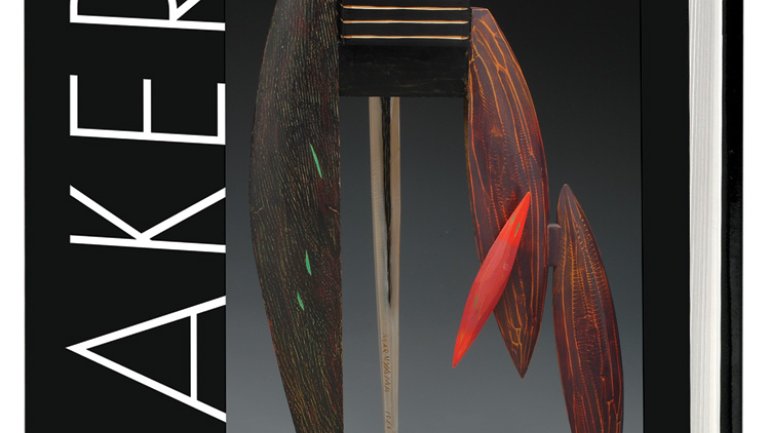Studio Craft 101
Studio Craft 101
Makers: A History of American Studio Craft
By Janet Koplos
and Bruce Metcalf
University of North
Carolina Press
Chapel Hill, NC
$65
Art critic Janet Koplos and studio jeweler Bruce Metcalf have achieved something heretofore unknown in studio craft: a single volume devoted to the history of the field, from its origins in 1850s England to the late 1990s. It is a kind of Janson's History of Art for the studio movement, illustrated with key objects from nearly every medium and period. For a field that has been without a definitive text for over a century and a half, it represents a high watermark. The authors humbly note that their work is not comprised, for the most part, of original research - the accomplishment here is the synthesis of information and ideas.No shocking revelations are to be found in the pages of Makers, unless you consider objectivity and coolheaded analysis a revelation in writing about studio craft, in which case you may be pleasantly surprised.
Koplos (who recently served as guest editor of American Craft) and Metcalf begin from the premise that the audience for Makers will include students, scholars, artists, collectors and museum professionals. Lacking an encyclopedic book of this kind until now, professors who wished to introduce craft topics had to make do with exhibition catalogs, material-based surveys, articles and polemics, often too specific or arcane for undergraduate courses. With this text, students will have an inspired reference that grounds craft movements in various contexts of craft education, production, display, sales and collecting. While recent texts such as Howard Risatti's A Theory of Craft or Glenn Adamson's Thinking Through Craft provide much-needed analysis of craft’s position within visual culture, neither are intended to be single-volume handbooks of the field. Makers fills that void.
As its introduction notes, this book attempts the nearly impossible task of surveying a field whose boundaries are
in a state of constant flux, specifically with regard to the nature of functionality and material, and craft’s relationship to fine art and design. Makers begins conservatively, featuring functional objects hand-fabricated from the traditional “arts and crafts” materials - clay, wood, glass, metal and fiber. The book encounters difficult territory right on schedule, just as the authors present a cogent exploration of the ways craft education evolved after World War II. Crafters now working on an unprecedented scale within universities, freed of the need to earn a living by selling wares, were able to develop a new kind of “craft art object,” curiously detached from the marketplace (and literal functionality), while those laboring outside academia who were more retail-minded tended to accuse the academics of being disconnected from the “real” craft world. This divide is one factor that has contributed to the well-documented identity crisis craft has faced ever since.
The objects that resulted from this era and the following decades, classified somewhere in between fine art and craft, still occupy a kind of intellectual purgatory requiring their own museums, galleries, art fairs, and (yes) magazines. Koplos and Metcalf could have used Makers to give studio craft a narrower retrospective focus
by excluding works like the sculptures of Viola Frey or Lenore Tawney, but understanding that this conundrum is key to the story they're telling, they take a broader view, which explains how certain sculptors, by dint of their training and use of materials and techniques, came to be understood as “crafters” in the first place.
Makers goes far toward paving the way for the study of studio craft to gain the credibility it has long deserved as a rich expression of an aesthetic and social point of view, a lifestyle, an ethos, and an incubator for taste and ideas.
Makers: A History of American Studio Craft is a project initiated and supported by the Center for Craft, Creativity & Design, a regional center at UNC, Asheville.

